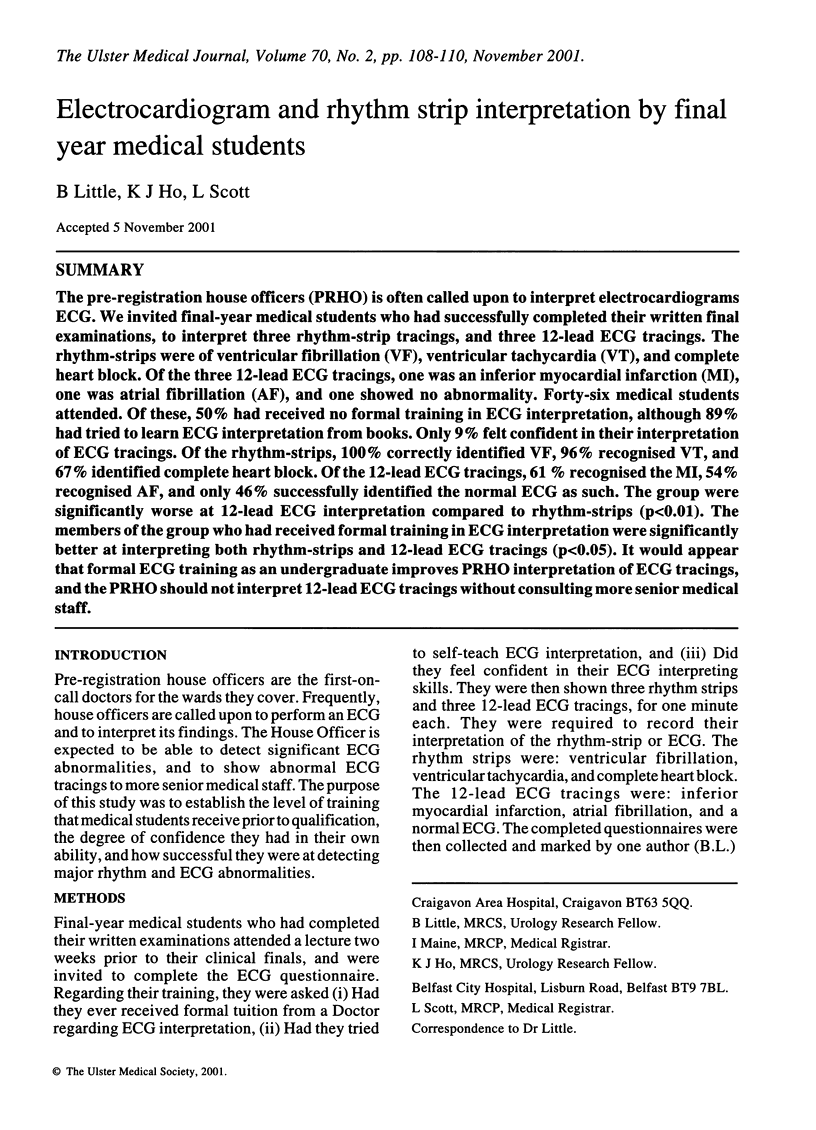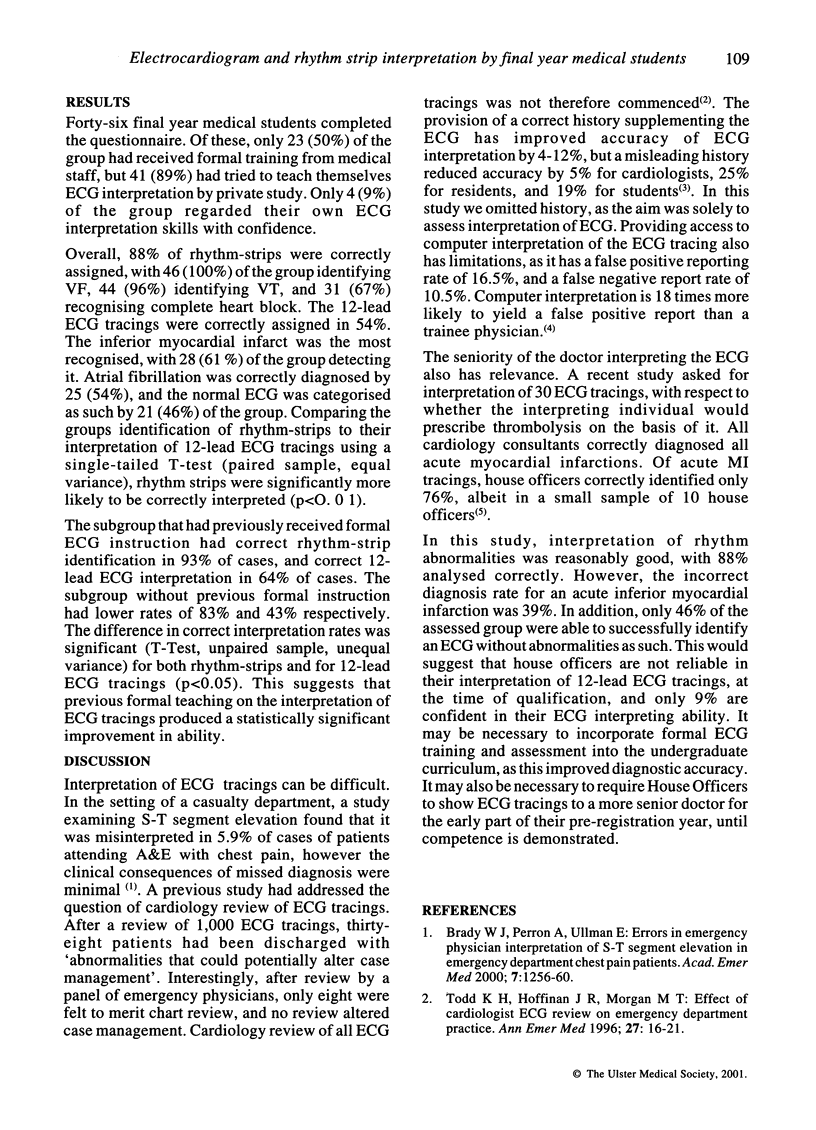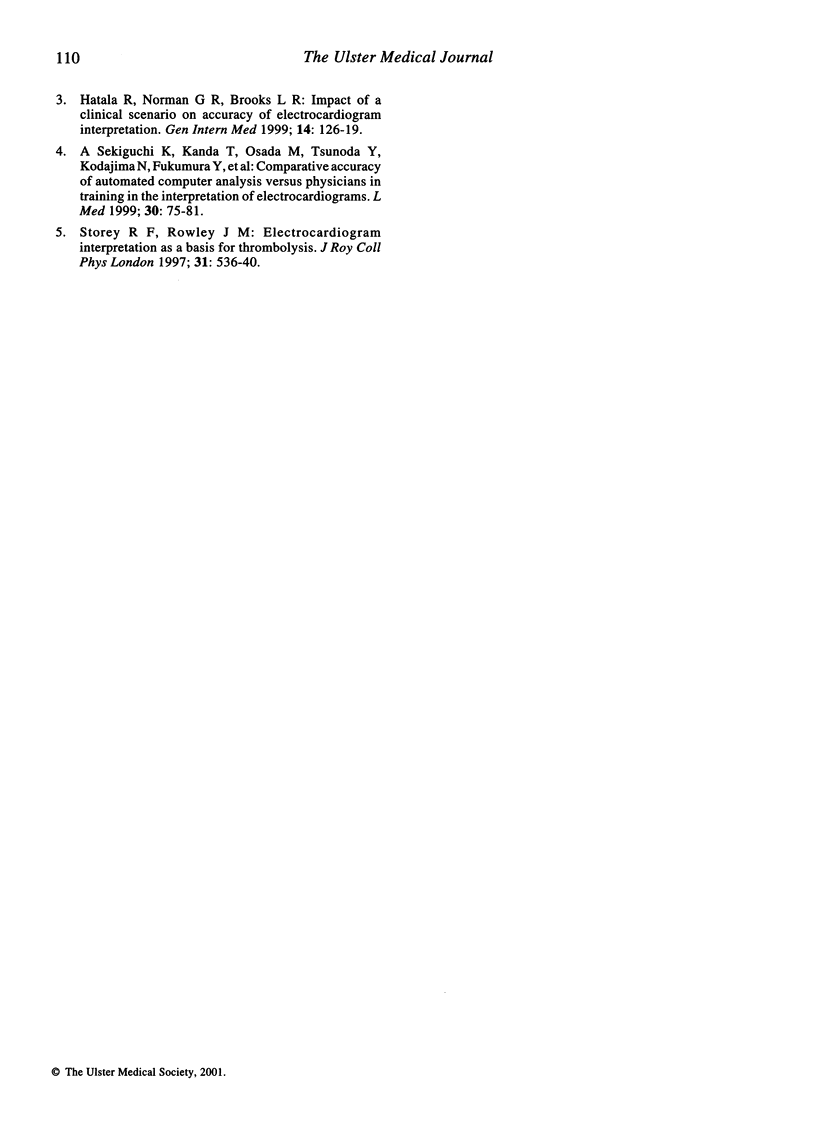Abstract
The pre-registration house officers (PRHO) is often called upon to interpret electrocardiograms ECG. We invited final-year medical students who had successfully completed their written final examinations, to interpret three rhythm-strip tracings, and three 12-lead ECG tracings. The rhythm-strips were of ventricular fibrillation (VF), ventricular tachycardia (VT), and complete heart block. Of the three 12-lead ECG tracings, one was an inferior myocardial infarction (MI), one was atrial fibrillation (AF), and one showed no abnormality. Forty-six medical students attended. Of these, 50% had received no formal training in ECG interpretation, although 89% had tried to learn ECG interpretation from books. Only 9% felt confident in their interpretation of ECG tracings. Of the rhythm-strips, 100% correctly identified VF, 96% recognised VT, and 67% identified complete heart block. Of the 12-lead ECG tracings, 61 % recognised the MI, 54% recognised AF, and only 46% successfully identified the normal ECG as such. The group were significantly worse at 12-lead ECG interpretation compared to rhythm-strips (p<0.01). The members of the group who had received formal training in ECG interpretation were significantly better at interpreting both rhythm-strips and 12-lead ECG tracings (p<0.05). It would appear that formal ECG training as an undergraduate improves PRHO interpretation of ECG tracings, and the PRHO should not interpret 12-lead ECG tracings without consulting more senior medical staff.
Full text
PDF


Selected References
These references are in PubMed. This may not be the complete list of references from this article.
- Brady W. J., Perron A., Ullman E. Errors in emergency physician interpretation of ST-segment elevation in emergency department chest pain patients. Acad Emerg Med. 2000 Nov;7(11):1256–1260. doi: 10.1111/j.1553-2712.2000.tb00471.x. [DOI] [PubMed] [Google Scholar]
- Hatala R., Norman G. R., Brooks L. R. Impact of a clinical scenario on accuracy of electrocardiogram interpretation. J Gen Intern Med. 1999 Feb;14(2):126–129. doi: 10.1046/j.1525-1497.1999.00298.x. [DOI] [PubMed] [Google Scholar]
- Sekiguchi K., Kanda T., Osada M., Tsunoda Y., Kodajima N., Fukumura Y., Suzuki T., Kobayashi I. Comparative accuracy of automated computer analysis versus physicans in training in the interpretation of electrocardiograms. J Med. 1999;30(1-2):75–81. [PubMed] [Google Scholar]
- Storey R. F., Rowley J. M. Electrocardiogram interpretation as a basis for thrombolysis. J R Coll Physicians Lond. 1997 Sep-Oct;31(5):536–540. [PMC free article] [PubMed] [Google Scholar]
- Todd K. H., Hoffman J. R., Morgan M. T. Effect of cardiologist ECG review on emergency department practice. Ann Emerg Med. 1996 Jan;27(1):16–21. doi: 10.1016/s0196-0644(96)70290-1. [DOI] [PubMed] [Google Scholar]


